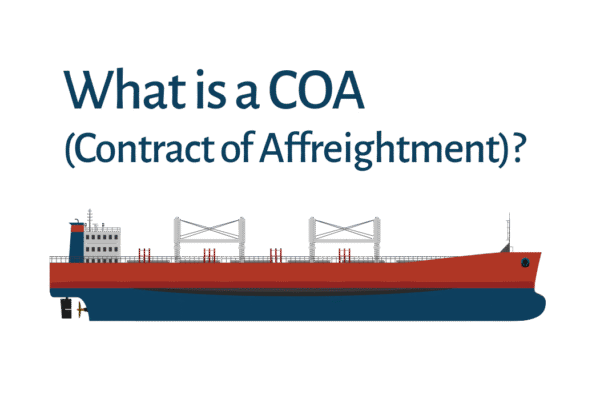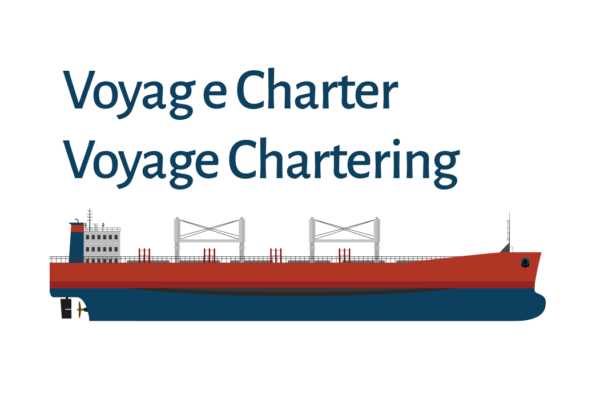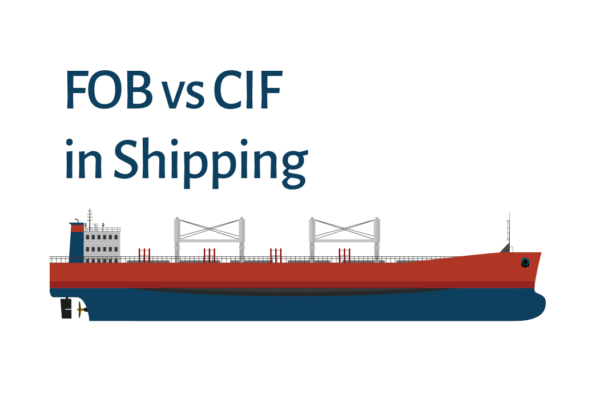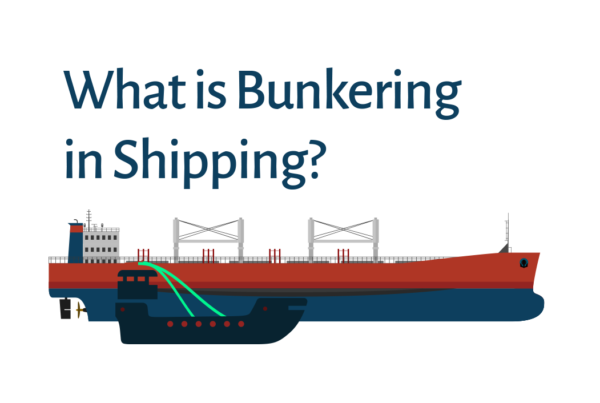Dry docking is the procedure of taking a vessel from the water to facilitate maintenance, repair, or inspections. Just like cars need regular service, shipyards take ships to special places called “locks” for repair and maintenance. This procedure is crucial for maintaining the ship’s ongoing safety and operational effectiveness.
A dry dock, also known as a drydock or dry-dock, is a specialized narrow basin engineered for this purpose. Dry dock operates by flooding to allow a ship or other watercraft to float in. After the dry dock takes in the vessel, they drain the water, leaving the vessel securely positioned on a dry platform.
As a routine but vital operation, dry docking plays a pivotal role in maintaining the structural integrity and functionality of maritime vessels, thus contributing to the overall safety and reliability of global maritime operations. In general, classification society of a ship requires vessels to enter dry dock once in five years.
What is a Dry Dock and Dry Docking?
Dry Dock Meaning
A dry dock is a special place for working on ships away from the seawater. It helps with maintenance, repairs, and building ships. Ships are taken out of the water for drydocking purposes. A dry dock is essentially a watertight basin that can be flooded to allow a vessel to enter.
Once the vessel is in this basin, the sea water is removed and the ship is secured on a dry platform without seawater. This controlled environment allows access to parts of the vessel that are usually underwater. This includes the hull and propellers. It makes essential inspections, repairs, and upgrades possible.
Dry docks are essential for maintaining ships, ensuring their safety and efficiency, and are crucial for maritime operations.
Dry docking is the actual process of taking a vessel into dry dock. This process is essential for various maintenance, repair, and inspection tasks that cannot be performed while the vessel is afloat.
The dry docking process begins with the careful planning and scheduling. The vessel is typically maneuvered to the dry dock facility, which is often equipped with large gates that can be opened to allow water to flow in or out.
Once the vessel is positioned correctly, the dry dock is flooded, allowing the vessel to float in. After the vessel is securely in place, the water is then drained from the dock, causing the vessel to rest on blocks or supports that are strategically placed to distribute its weight evenly.
Once the team completes all necessary work in the dry dock, they flood the dry dock again, allowing the vessel to float free. The crew carefully maneuvers the vessel out of the dry dock and back into the water, where it can resume its operations. Dry docking is important for keeping the vessel in good shape. It also helps ensure safety and meets respected regulations and certifications.
Ensuring Maritime Excellence: Witness the Vital Maintenance of a Vessel in Dry Dock, Where Safety and Precision Meet to Preserve the Lifeblood of Global Shipping.
What are Floating Dry Docks?
As their name implies, floating dry docks are not fixed to the land. Floating dry docks are water crafts securely docked to a specific shipyard.
These mobile structures, usually constructed of steel, are equipped with ballast tanks on either side and at the bottom. The floating docks can lower or raise by taking seawater into its ballast tanks. The floating dry docks are lowered to allow a vessel to float in.
Below are the benefits of floating docks.
- Mobility and Greater Accessibility: Floating dry docks have mobility to undock from one shipyard and dock to another shipyard. This mobility provides shipyards with the flexibility to service vessels in various regions without requiring permanent infrastructure.
- Rapid Deployment: Floating dry docks can be set up quickly when emergency repair needs arise. This includes situations like maritime accidents, salvage or urgent repairs. This helps reduce the downtime for ships.
- Environmental Impact: By being situated offshore, floating dry docks may reduce the environmental impact on coastal areas, particularly in regions where shoreline development is restricted or regulated.
- Space-Efficient: Can be positioned further offshore, thereby freeing up valuable land space near the shore.
- Adaptability to Different Vessel Sizes: Floating dry docks can be adjusted or modified to accommodate a wide range of vessel sizes, from smaller boats to large ships, enhancing their utility for various types of maritime operations.
- Reduced Shore Infrastructure Requirements: Since floating dry docks do not require extensive shore-based facilities, they reduce the need for significant land-based infrastructure, which can be beneficial in areas with limited available space.
However, there are also some drawbacks to floating dry docks compared to their traditional counterparts. Operations may be slower because there is only one access point for workers and equipment. They are also more likely to be disrupted by tides or windy weather.
Additionally, re-flooding the dock requires the removal of all equipment, which can lengthen the time needed for operations. Maintenance costs for floating dry docks are also comparable to those of a ship, adding another layer of operational complexity.
Types of Dry Docking
Floating Dry Docks, Graving Docks, Slipways
The maritime industry employs several types of dry docks. Each of dry dock types meets some specific needs for ship repair and maintenance. The three primary types of dry docks are floating dry docks, graving docks, and slipways.
- Floating Dry Docks: These are mobile structures that can be moved to various locations. Floating dry dock offers flexibility in servicing vessels. Floating dry docks are particularly useful for emergency repairs. They are typically found in sheltered harbors and can accommodate a wide range of vessel sizes by submerging to allow the ship to enter, then raising the vessel out of the water by removing the ballast water.
- Graving Docks: A graving dock is a permanent, shore-connected structure, essentially a large basin dug into the ground, often made of concrete. Once the vessel is floated in, the dock is sealed, and the water is pumped out, leaving the vessel resting on a dry platform. Graving docks are widely used for large ships due to their stability and ability to handle extensive maintenance and repair work. They are a preferred choice for significant overhauls and long-term projects where precision and access to robust infrastructure are critical.
- Slipways: Slipways, also known as marine railways, consist of a sloped platform or ramp that extends into the water. Ships are pulled out of the water and onto the platform using a system of winches and rails. Slipways are often used for smaller vessels and are a cost-effective option for routine maintenance and minor repairs. While not as versatile as floating or graving docks, slipways are ideal for specific applications, particularly where space and resources are limited.
The Dry Docking Process
Planning and Execution of Dry Docking
The dry docking of a vessel is a well-planned and executed procedure. Dry docking process ensures a vessel is safely brought out of the seawater for the needed maintenance, repair, and inspections.
The dry docking process involves several key steps.
- Preparation and Planning: Before dry docking begins, extensive planning is undertaken to assess the vessel’s condition, determine the scope of work required, and select the appropriate dry dock type and facility. For example, Shipyards in Tuzla and Yalova cities are perfect locations for drydocking in Mediterranean region.
- Positioning the Vessel: Once the vessel arrives at the dry dock, it is carefully maneuvered into position. This step requires precise coordination between the ship’s crew and the dockyard personnel to ensure the vessel is correctly aligned with the dock’s keel blocks or support structures. Proper positioning is crucial to distribute the vessel’s weight evenly and avoid structural stress during the dry docking process.
- Flooding the Dry Dock: For floating and graving docks, the dry dock is initially flooded to allow the vessel to enter. The water level is carefully controlled to ensure that the ship floats in without incident. Once the vessel is in place, the dock gates are closed to secure the area.
- Draining the Water: After the vessel is positioned, the next step involves draining the water from the dry dock. Powerful pumps are used to remove the water, gradually lowering the vessel onto the dry dock’s keel blocks. This process must be conducted slowly and evenly to prevent any undue stress on the vessel’s structure.
- Maintenance and Repair Work: With the vessel now securely resting on the dry dock platform, the maintenance and repair work can begin. This stage may include hull cleaning, painting, inspections, and repairs to underwater components such as propellers, rudders, and hull plates. The scope of work varies depending on the vessel’s condition and the specific requirements of the dry docking schedule.
- Inspection and Quality Control: Throughout the maintenance and repair phase, inspections are conducted to ensure that all work meets the required standards. Quality control checks are vital to verify that the vessel’s structural integrity and operational readiness are restored or maintained. Any issues identified during this phase are addressed before proceeding.
- Re-floating the Vessel: Once all work is completed, the dry dock is gradually reflooded, allowing the vessel to float off the keel blocks. Careful attention is paid to ensure that the vessel remains stable and that no water intrusion occurs during this process.
- Final Checks and Departure: After re-floating, the vessel undergoes a series of final checks to confirm that all systems are operational and that the ship is ready to return to service. Once these checks are completed, the dock gates are opened, and the vessel is carefully maneuvered out of the dry dock, concluding the dry docking process.
The dry docking process is essential for maintaining the seaworthiness and safety of vessels, allowing shipowners to address any issues that could affect the vessel’s performance and longevity. By following a structured and systematic approach, the dry docking process ensures that ships are serviced efficiently and effectively, minimizing downtime and ensuring they are ready for their next voyage.
Frequency and Regulations
IMO, SOLAS and Classification Society
International Maritime Organization’s regulations and ship’s Classification Society’s requirements determine the frequency of drydocking. Apart from this, any operational requirement to call a dry dock may also occur at any time.
The concept of regulatory dry docking is for the safety and environmental standards. This also covers the purpose of addressing wear and tear that occurs during normal operations.
Under the SOLAS regulations established by the International Maritime Organization (IMO), all merchant ships are mandated to undergo an intermediate survey within 36 months. Additionally, these vessels must have a comprehensive hull inspection in a dry dock at least twice within a five-year period.
Failure to complete the necessary dry docking and inspections could result in the denial of a Safety Construction Certificate. This means grounding the vessel until compliance is achieved.
- Regulatory Requirements: The International Maritime Organization (IMO) and various classification societies set forth specific regulations regarding dry docking frequency. Typically, commercial vessels are required to be dry docked at least once every five years. However, some regulations may require more frequent docking depending on the vessel’s type, age, and condition. These regulations are designed to ensure that critical aspects of the ship, such as the hull, propellers, rudders, and underwater valves, are thoroughly inspected and maintained.
- Intermediate Surveys: In addition to the five-year dry docking schedule, many vessels are also subject to intermediate surveys, which usually occur around the two-and-a-half-year mark. During these surveys, certain inspections and maintenance tasks are carried out without the need for a full dry docking. However, if significant issues are detected during these surveys, a full dry docking may be required sooner than scheduled.
- Special Circumstances: Beyond the regular schedule, dry docking may also be necessary under special circumstances, such as after a collision, grounding, or if significant damage is detected during routine operations. In such cases, immediate dry docking is often required to ensure the vessel’s safety and to comply with regulatory standards.
- National Regulations: In addition to international requirements, many countries have their own regulations governing dry docking frequency, particularly for vessels that operate within their territorial waters. These regulations may impose stricter standards or additional requirements, such as environmental assessments or specific maintenance procedures that must be followed during dry docking.
- Owner and Operator Considerations: Beyond regulatory requirements, shipowners and operators may choose to dry dock their vessels more frequently based on operational considerations. Factors such as the vessel’s age, the nature of its trade routes, and the level of wear and tear experienced can influence the decision to conduct dry docking outside the mandatory schedule. Proactive dry docking can help prevent unexpected issues and ensure that the vessel remains in optimal condition, reducing the risk of costly downtime.
Regular dry docking is an important part of maritime operations. It helps keep the vessel strong and efficient. It also ensures that the vessel meets international and national standards.
Dry docking is an important process in the maritime industry. It involves taking vessels out of the water for maintenance, repairs, and inspections. Just like cars need regular maintenance, ships go to dry docks for safety checks and to keep them running well.
A dry dock is a sealed area. A ship is floated in, and then the water is removed. This allows access to the ship’s bottom and underwater parts. This process is crucial for maintaining the ship’s structural integrity and compliance with safety regulations.
Regular dry docking, typically required by the International Maritime Organization (IMO) and classification societies, ensures that vessels remain seaworthy and meet international standards. By following these procedures, shipowners can minimize operational risks and extend the lifespan of their vessels.






